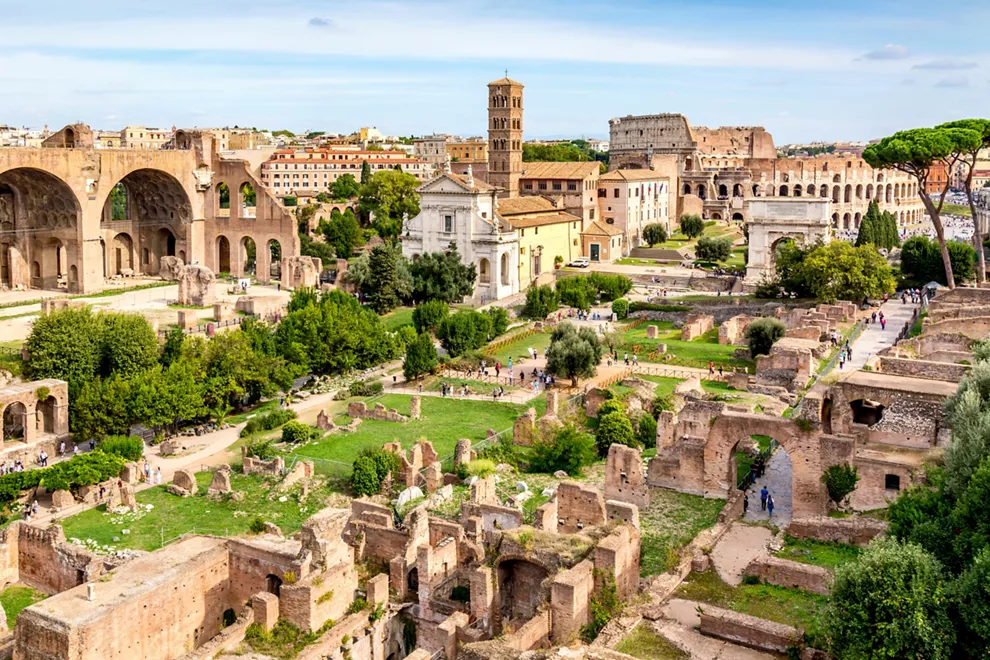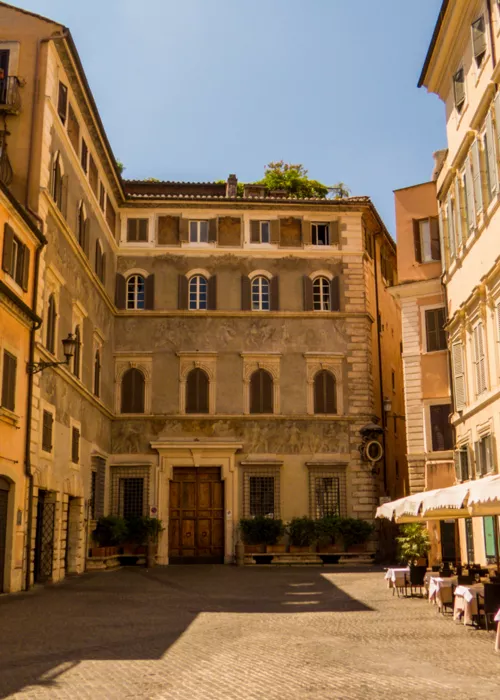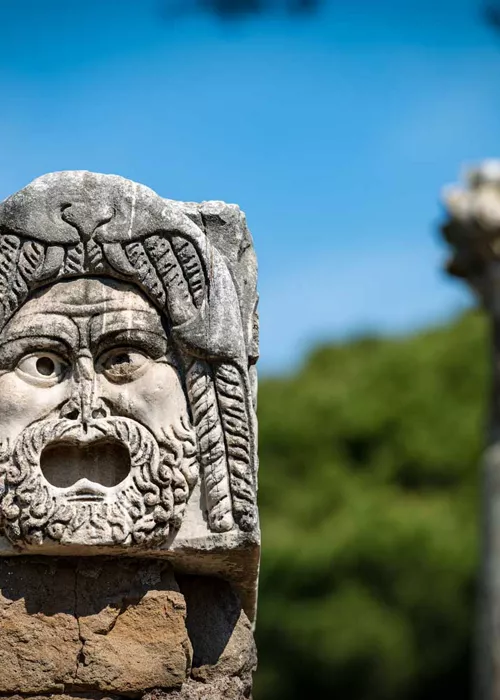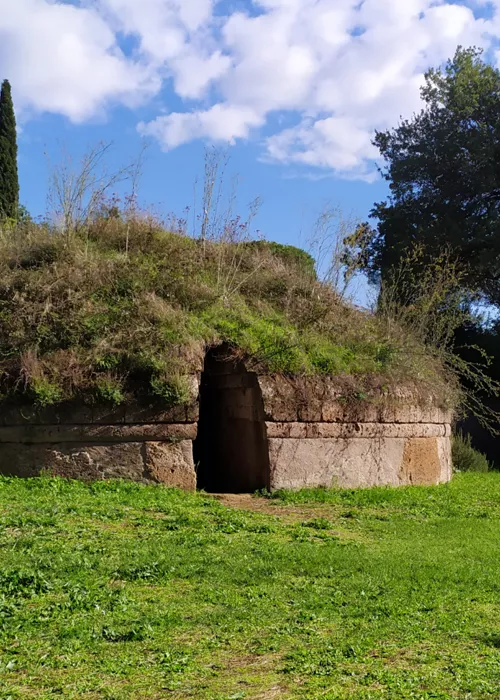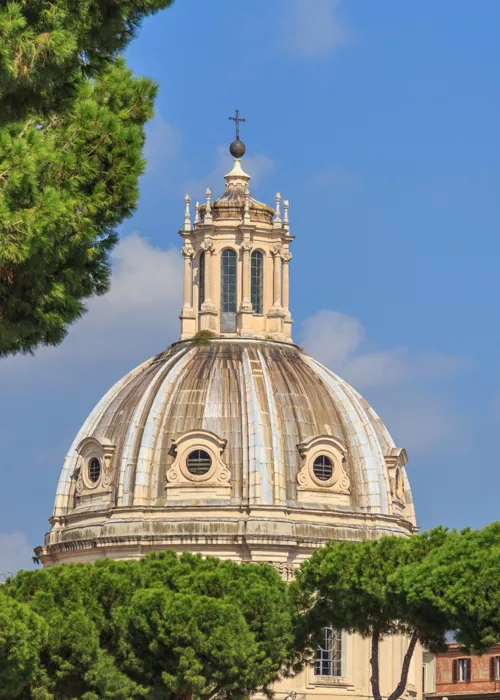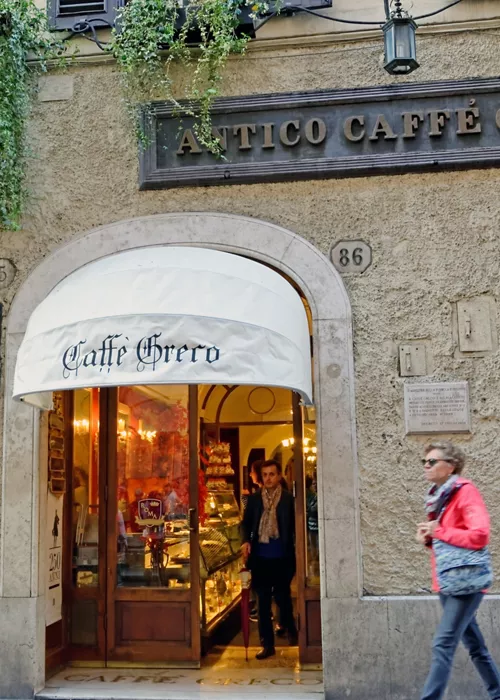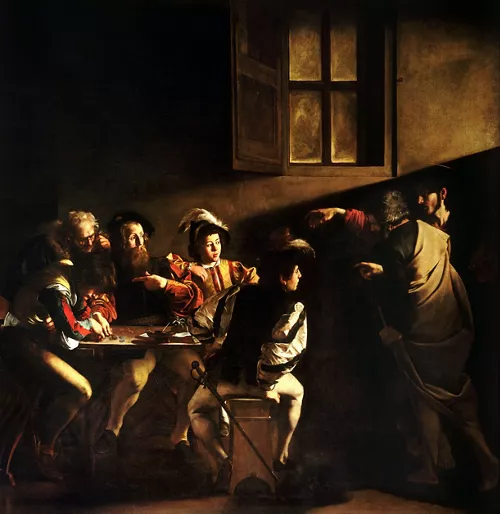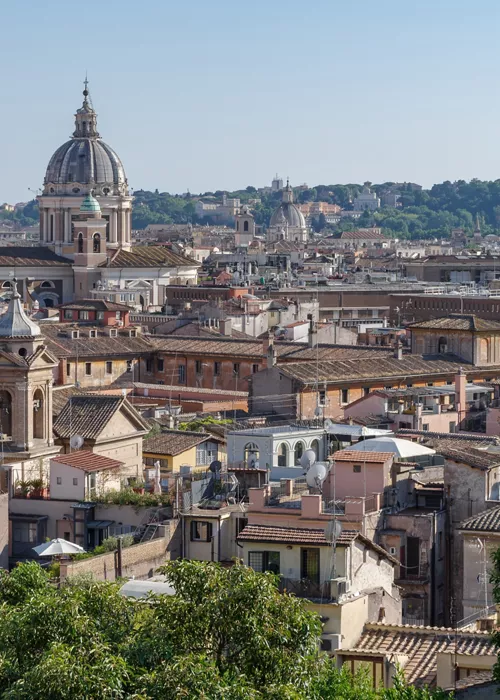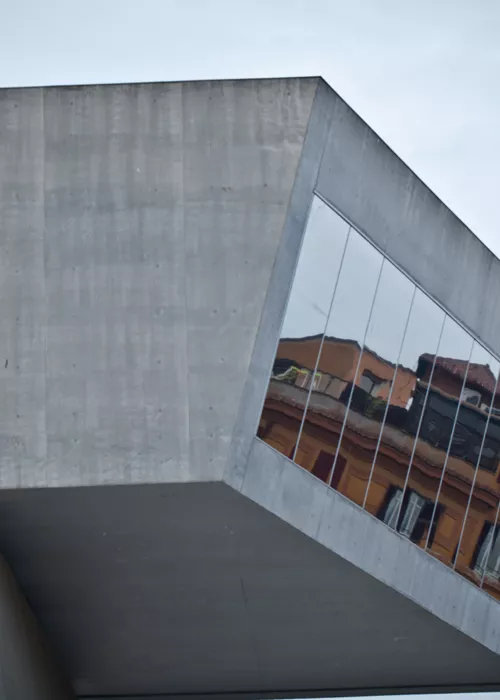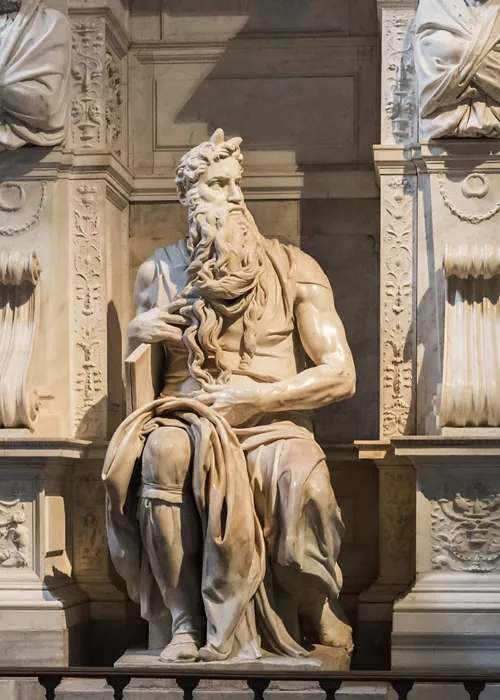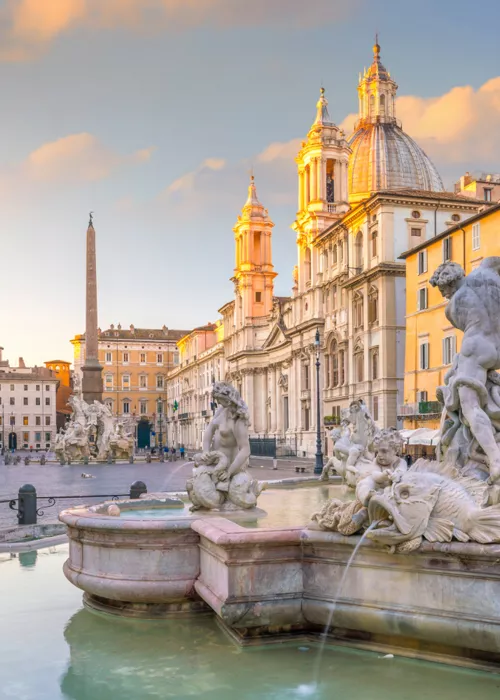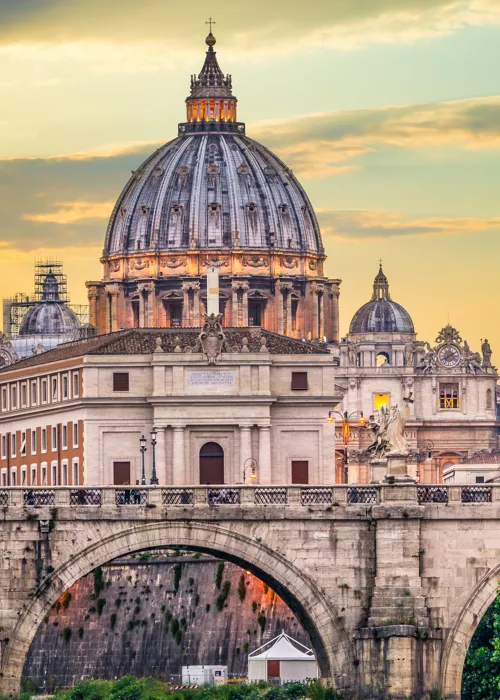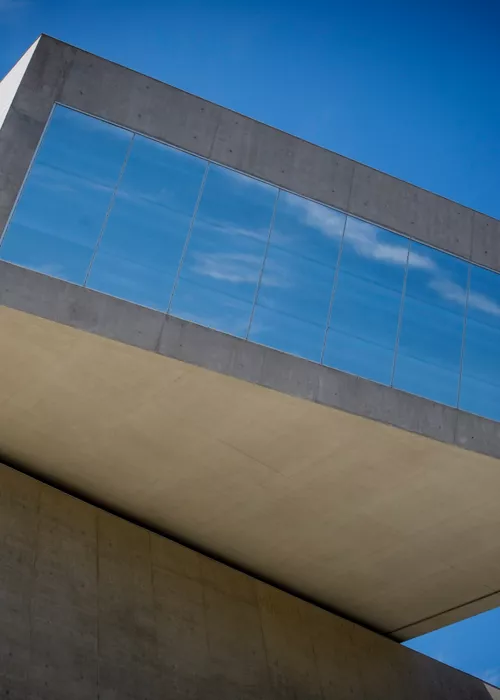Rome: The Imperial Fora
3 minutes
The Imperial Fora in Rome include a series of monumental piazzas built between 46 B.C.E. and 113 A.D. They are considered to have been the hub of Ancient Rome’s political activities, and they were eventually accompanied by other structures over the course of centuries.
Forum of Caesar
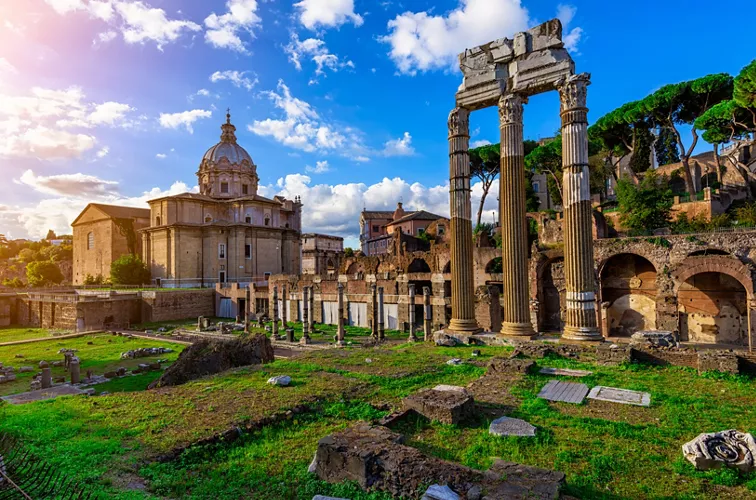
The first building encountered in this impressive complex is the Forum of Caesar. This piazza, which was built for Julius Caesar's propaganda, was inaugurated in 46 B.C.E. and was completed by Emperor Augustus. The piazza has two porticoes on the east and west sides, while a temple dedicated to Venus Genitrix dominates the far end. The land on which the forum was built was directly purchased by Caesar, while the forum was built as an annex the buildings in the old political center so as to loan it more visibility and prestige.
Forum of Augustus
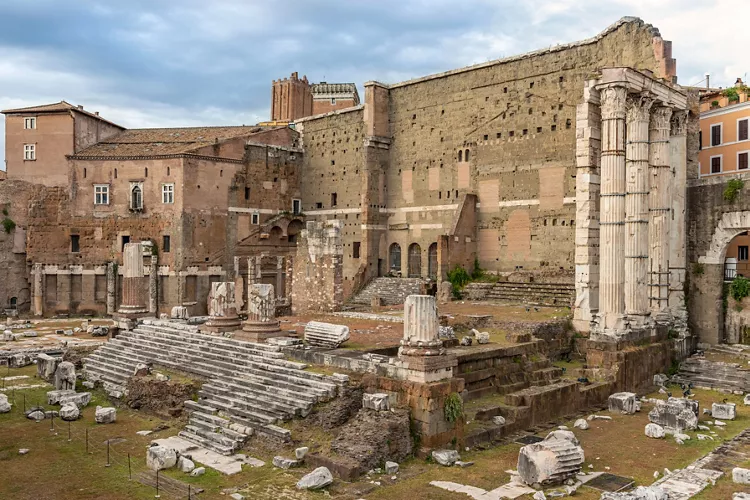
Next to the Forum of Caesar is the Forum of Augustus. It was built for Emperor Augustus together with the temple of Mars Ultor (Mars the Avenger, in Latin). In a vow made to the god, the Emperor promised to build the temple if he won the Battle of Philippi (42 BC). However, it was only inaugurated 40 years later and was part of a second monumental piazza, that was named after Augustus. This forum is perpendicular to the Forum of Caesar, with the Temple of Mars on its north edge, against a wall (still visible today) that separates the forum from the popular Suburra district. The area was embellished with statues inspired by Roman history, by members of the gens Julia, by Aeneas and by Romulus.
The Temple of Peace
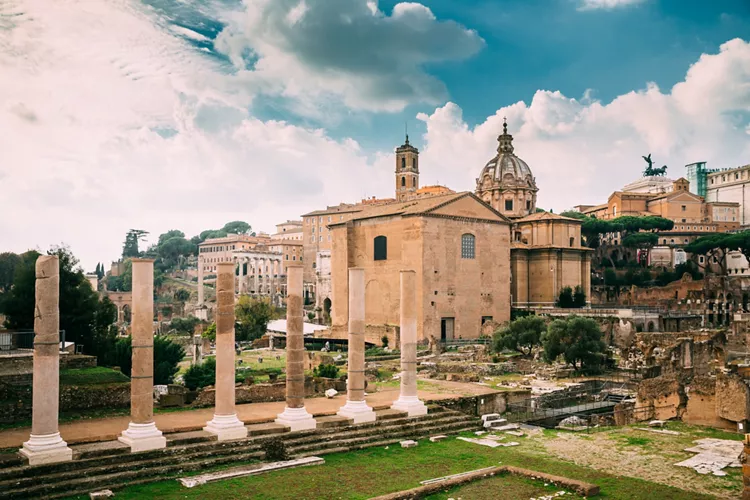
It was 75 A.D., and Vespasian had just conquered Jerusalem. A site as the Temple of Peace, located between the Augustan and Caesarian Forums, is dedicated to Emperor Vespasian. It was not initially a part of the forums, and its quadrangular layout resembled a garden-museum with ponds and pedestals for statues. The area was destroyed by a fire and rebuilt during the Severan period (3rd Century A.D.) to house the Forma Urbis Romae, a map of Ancient Rome carved on marble slabs (only partially intact today).
Forum of Nerva
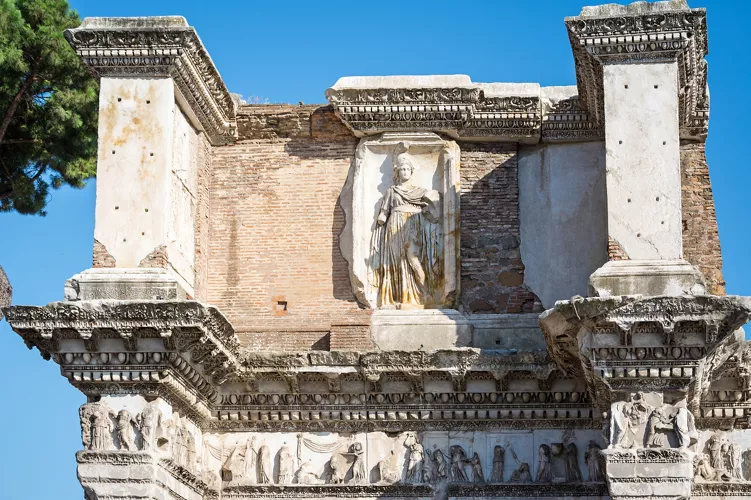
The emperor Domitian later built a piazza to connect the free space between the Temple of Peace and the Forums of Caesar and Augustus however, he was unable to inaugurate his work, having died in 96 A.D., and thus leaving his throne to Nerva. This resulted in the construction of the Forum of Nerva and the annexed Temple of Minerva (the protector of the emperor). This forum is also referred to as the Transitional Forum since it connects the other forums.
Trajan's Forum
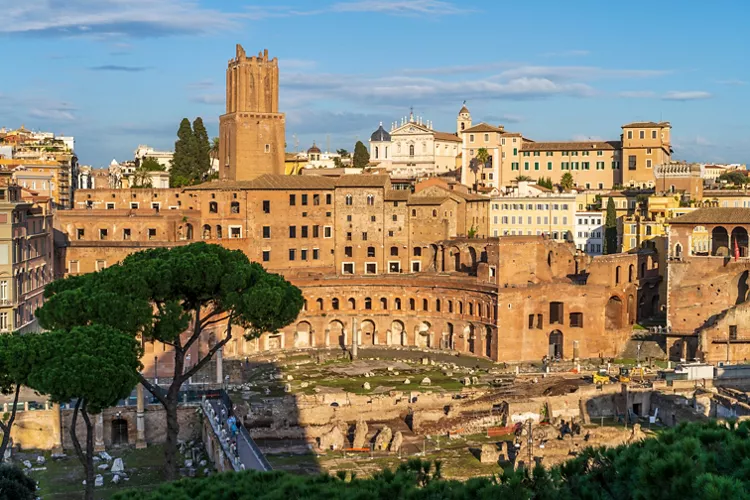
The work begun by Domitian was partly continued by Trajan, after whom the fourth forum was named. This piazza was used for military encampments and, to a minimum extent, to perform judicial procedures. Trajan's Column still stands behind it, which tells of the Emperor’s deeds in his war against the Dacians. The construction of the forum was followed by that of the Basilica Argentaria, Trajan’s Market and the reconstruction of the Temple of Venus Genitrix. Lastly, the Basilica Ulpia, the largest Basilica constructed during the Roman Era, was built on commission by Apollodorus of Damascus between 106 and 113 B.C.E. and was located in Trajan's Forum. The area was intended for activities associated with justice and commerce, but it was also the venue for manumission, that is the act by a slave owner of freeing their slaves.

